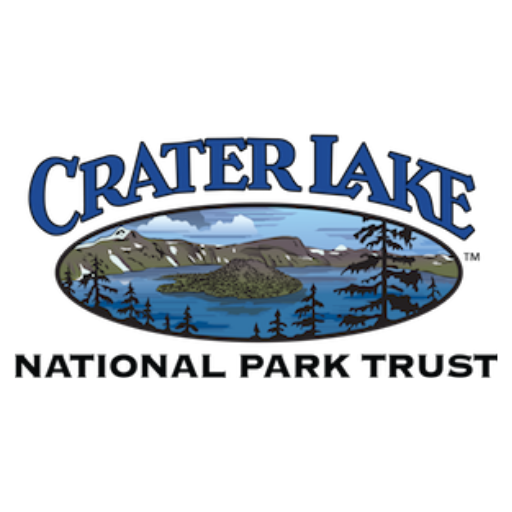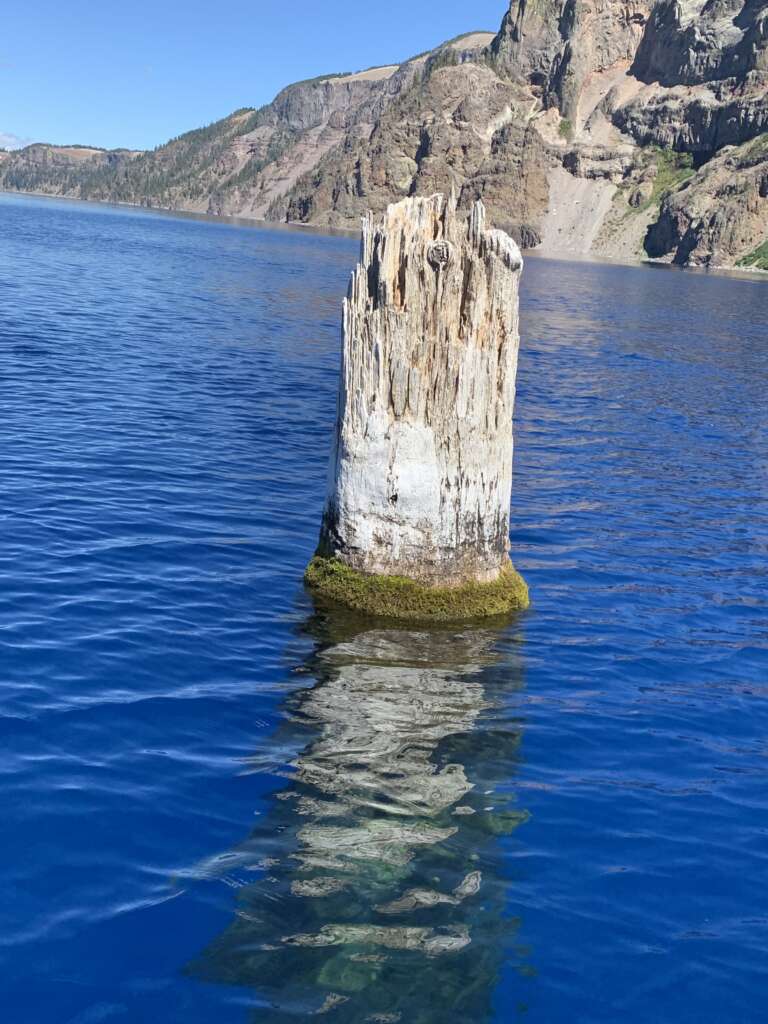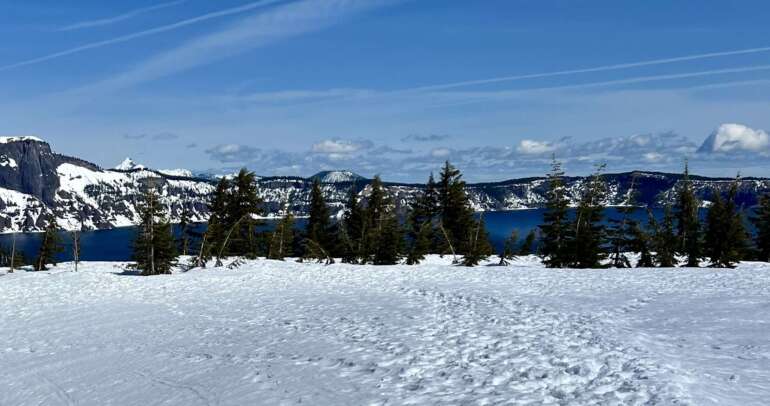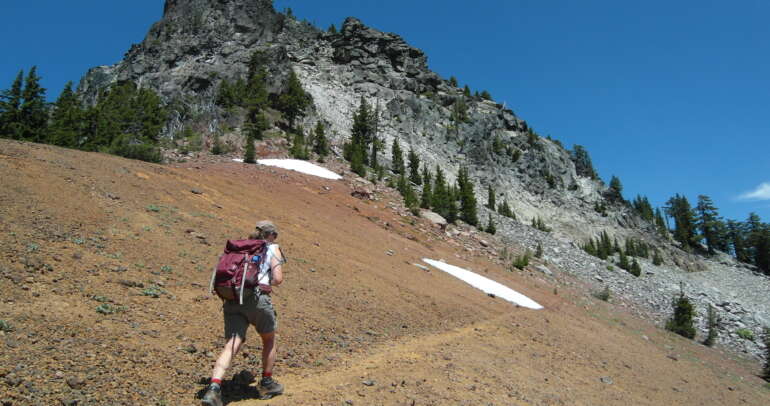Plan Ahead for Next Summer
A boat tour on Crater Lake is an eye-opening experience. While the lake is postcard-pretty from a rim overlook, being on the lake and circling the caldera it sits in is always a revelation. It’s from the lake that its rugged, ragged walls are truly seen and appreciated. Even better is spending three hours on Wizard Island. Combine them together and it’s seeing Crater Lake inside-out.
But just like frustrated sports teams, the mantra for people wanting to take a Crater Lake boat tour is “Wait Until Next Year.” After gaining approval from the U.S. Coast Guard, concession-operated tours in the new, quieter boats were limited for a too brief period that began August 28 and ended September 17.
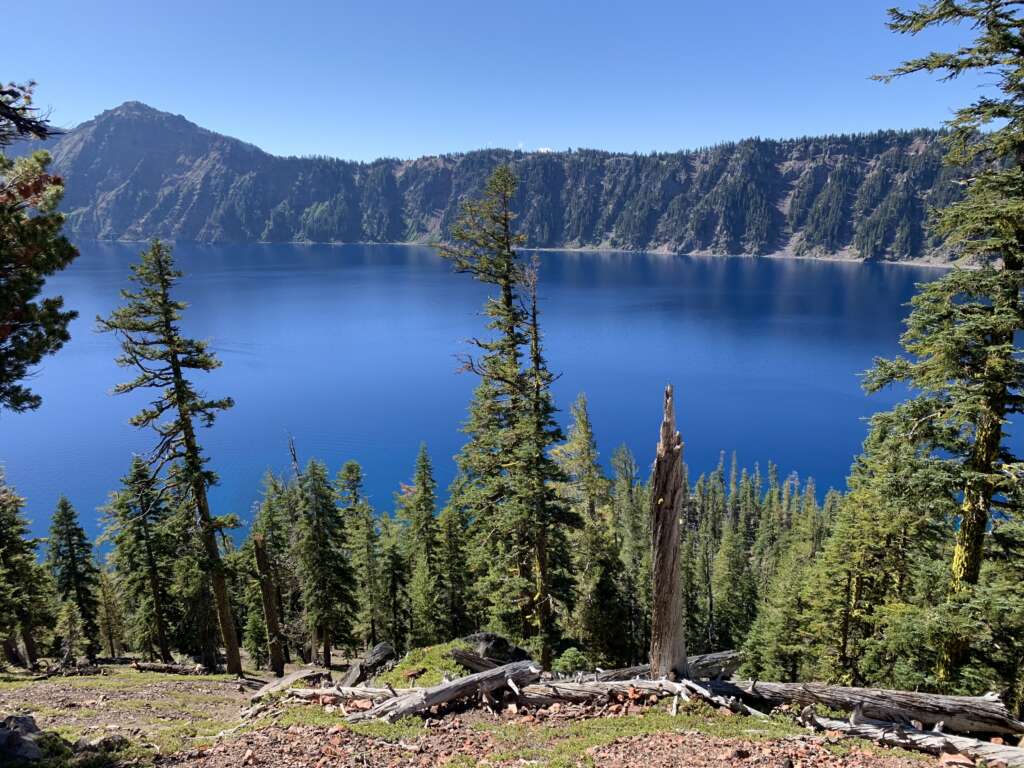
So, why should people think about next summer? Depending on winter snowfall and how long it takes to clear the 1.1-mile trail from the Cleetwood Cove parking area/trailhead to the boat docks, a best-case scenario means tours could begin in late June. But an average winter means the tours likely won’t launch until next July. There’s another reason to plan ahead. Current estimates call for closing the trail, which provides the only access to the lake, next September or October to begin major trail renovations and upgrades. The repairs will prevent access to the lake, and boats, for two, three or possibly more years.
Because I wanted to experience the new boats this summer, I made reservations for two trips – a standard ranger-guided two-hour cruise and a ranger-guided tour with a three-hour layover on Wizard Island. It’s true – as promised the new boats are much quieter. For the previous 20 years the boats were too noisy to allow a ranger to talk while the boat was moving. With the quieter boats, ride-along rangers provided an information-packed commentary while we traveled around the lake’s inner circumference.
It’s from lake level that the lake’s geologic features become incredibly real and alive. Features like Llao Rock. the Devil’s Backbone, Wizard Island, the Old Man of the Lake, Garfield Peak, the Chaski waterfalls, Phantom Ship, and the Pumice Castle. But, most of all, it’s seeing and being on Crater Lake’s clear, deep, seemingly bottomless blue-blue waters.
Interpretative rangers, who ride along the tours, provide insight and information. During the standard tour, volunteer ranger Jerry Rutiz explained, for example, that massive Llao Rock feature is named for Llao, the god of the underworld in Klamath Indian mythology. According to legends, Llao fought a losing battle with Skell, the god of the sky, that resulted in the eruption of Mount Mazama.
From lake level he described the features of the Devil’s Backbone, a 1,000-foot-long vertical wall of andesite lining a section of the caldera’s cliff wall. As Rutiz explained, seeing the Backbone from the lake is seeing “the inside plumbing of a volcano and the inner arteries of a volcano.”
We learned tidbits about the Phantom Ship, which from lake level takes on a wow-inducing prominence. Rutiz said geologists have determined the “Ship” is composed of rocks estimated to be more than 400,000 years old and was part of Mount Mazama’s interior before the mountain blew. When the boat made loops around the Phantom Ship, its dagger–like rocks – its tallest tower 170 feet above the lake – are jaw droppingly impressive.

More? We learned the Mazama Newt, found only in Crater Lake, is endangered because crayfish, introduced decades ago to provide food for fish planted in the lake, have multiplied, and inhabit an estimated 90 percent of the lake’s shoreline. We also slowly cruised alongside a lake oddity, the Old Man of the Lake, a log that rises 5 feet above the lake and extends 30 feet below. Incredibly, it’s been floating upright in the lake for more than a hundred years.
Some factoids were blended with humor. While filling up water bottles with lake water, which is only allowed from a tour boat. Rutiz teasingly said the water is so pure that although he was born in 1930, after drinking lake water he looks and feels younger and more vigorous than most 120-year-olds.
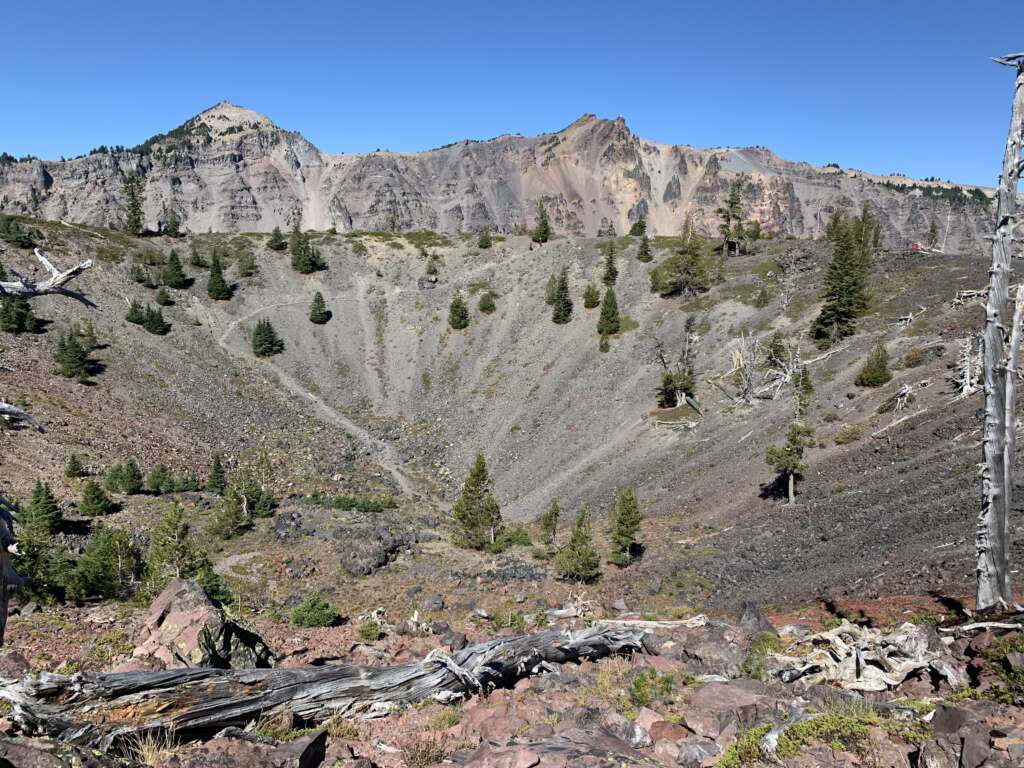
A few days later friends and I took the Wizard Island layover, giving us three hours on the island, a cinder cone that rises 767-feet above the After hopping off at the boat dock, most of that day’s 44 passengers headed up to the summit crater, which rises 767-feet atop the cinder cone. Some stayed to swim or fish. The trail gradually but steadily uphill 1.1 miles through timbered sections to the island’s summit. From there, a third-of-a-mile long loop trail provides 360-degree panoramic sights of the lake and caldera while another trail dips 90-feet into the crater’s belly. Highlights of the summit trail are the weather-worn, twisted whitebark pines. Although they’ve diminished over the years, the remaining contorted survivors are evocatively fascinating.
Over the decades I’ve seen the lake inside-out from Wizard Island and, even better, from tour and park research vessels. Each trip reinforces an important lesson – that being on the lake and inside its caldera creates a truly intimate connection with its indescribably clear deep, deep blue waters. What a privilege.
Seeing Crater Lake from lake level is an unforgettable, always unique, and surreal, eye-popping experience.
Wait until next year.
Written by Lee Juillerat in partnership with Crater Lake National Park Trust.

